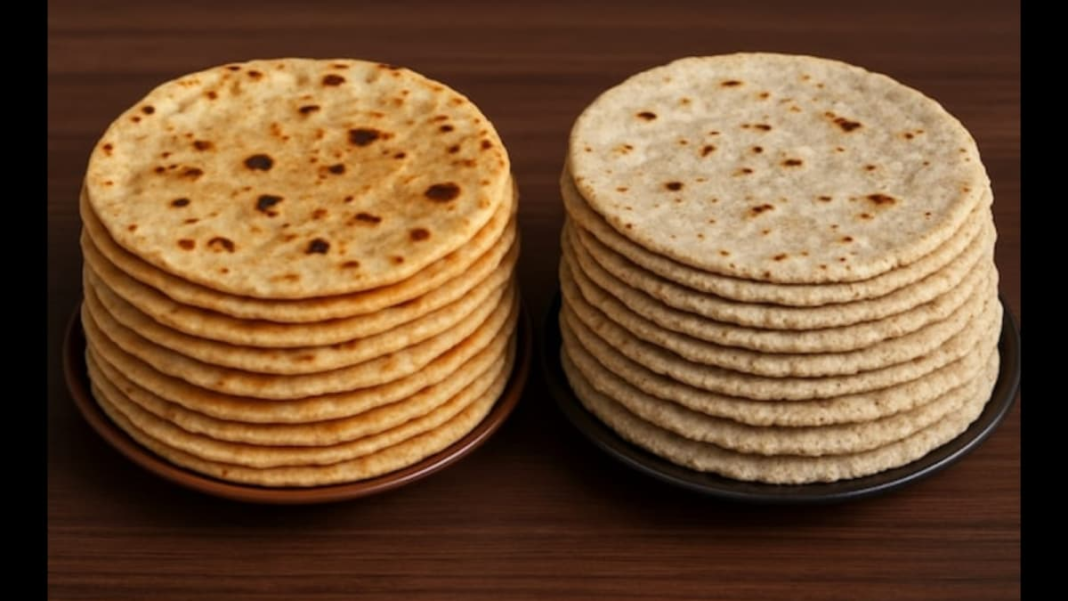Last Updated:
If you’re short on time and want convenience, go for wheat. If you’re looking for something easy on the stomach, especially in summer, jowar is an excellent pick
If your digestion is good and you want a soft roti that pairs well with all curries and vegetables, wheat roti is ideal. (News18 Hindi)
Roti is not just food in Indian homes; it’s a daily essential. From breakfast to dinner, roti finds a place in nearly every kitchen. But have you ever considered the impact this everyday staple has on your health?
Today, people are more health-conscious than ever before. Taste alone is no longer sufficient as nutrition matters too. This is why many have begun turning to traditional grains like jowar, bajra, and ragi. Among these, jowar (sorghum) stands out for its impressive health benefits. But is it suitable for daily consumption? Let’s understand which is better, wheat roti or jowar roti, and when each should be eaten.
Wheat Roti
Wheat roti is a household staple, easy to make, soft, and delicious. Thanks to gluten, it puffs up nicely and feels light on the palate. Its glycaemic index ranges from 60–70, meaning it digests slowly and provides lasting energy. Whole wheat flour with bran is even better, offering more fibre for improved digestion.
If your digestion is good and you want a soft roti that pairs well with all curries and vegetables, wheat roti is ideal. It also helps keep the body warm during winters.
Jowar Roti
Jowar is a traditional grain that’s making a comeback. Gluten-free and rich in fibre, it’s great for digestion and easing constipation. It also contains iron, magnesium, and potassium—nutrients that strengthen the body from within. With a glycaemic index of around 50, jowar is suitable for those managing blood sugar levels.
Its slightly earthy, nutty flavour pairs beautifully with desi meals. While rolling jowar roti takes a little effort, it’s light, cooling in summer, and perfect for those with acidity, gas, or gluten sensitivity.
When Should You Eat Which?
Your choice can depend on your body’s needs and the weather. If you’re short on time and want convenience, go for wheat. If you’re looking for something easy on the stomach, especially in summer, jowar is an excellent pick. Many people mix both flours, half wheat and half jowar, for a balanced option. Jowar can also be used to make parathas, upma, or chilla.
Which One’s Better?
Both rotis have their strengths. Wheat is wholesome but heavier and contains gluten. Jowar is light, gluten-free, and fibre-rich. If you’re new to jowar, start with one roti and see how your body responds. There’s no need to choose one forever. Alternate between the two, or combine them for a nutritious, satisfying meal. Serve with a dollop of ghee and seasonal vegetables for a complete, healthy Indian thali.
- First Published:

